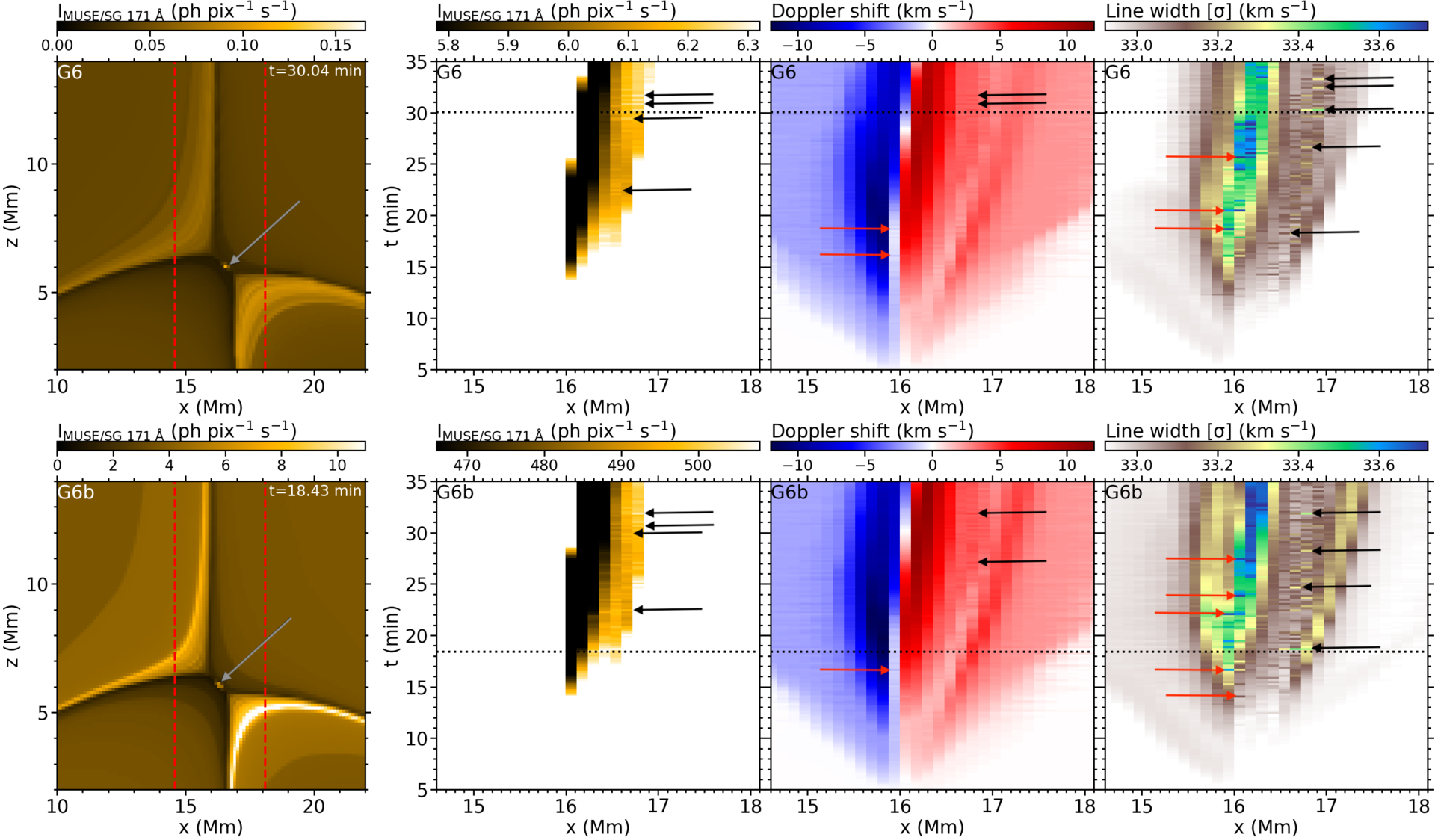
Plasmoids are tiny blobs of heated plasma generated by magnetic reconnection which in the Sun may provide crucial details on how the solar corona is heated up to its million-kelvin temperature. We have examined the capability of active and upcoming instruments to detect such plasmoids in the corona.
To that end, we performed two numerical simulations of plasmoid-mediated reconnection in a 2D fan-spine topology with different coronal densities and applied forward-modelling of extreme-ultraviolet (EUV) observables. With combined spectra of MUSE/SG and Solar-C/EUVST in multiple emission lines, along with high-resolution images from SO/EUI-HRI and the context imager of MUSE, we have shown that it should be possible to gain new insights about plasmoid formation in the corona which will ultimately lead us forward in unravelling the mysteries of our life-giving star.
